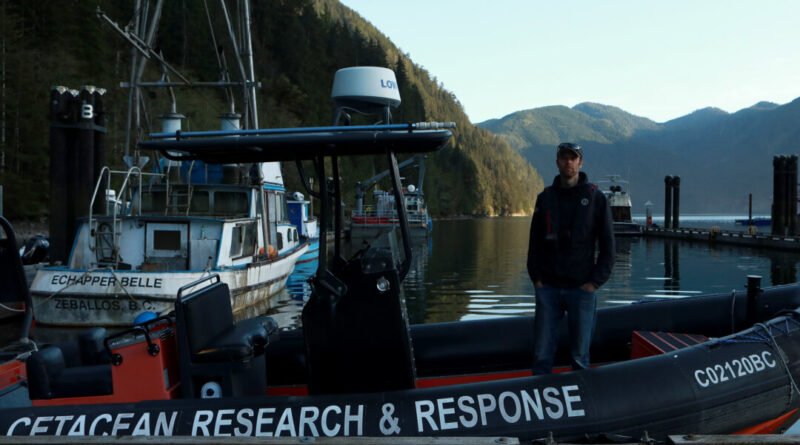Whale Experts Optimistic Orca Calf Will Thrive, Reunite with Family if Rescue Mission is Successful
The likelihood of a two-year-old killer whale calf surviving in the open ocean by itself and reuniting with its family members remains high if a rescue team can successfully free the orca trapped in a lagoon off Vancouver Island for almost a month, according to whale experts.
The second rescue attempt for the orca was paused on April 19 after the young whale consumed an 18-kilogram portion of seal meat provided, marking the first time since being stranded in the tidal lagoon in Little Espinosa Inlet near Zeballos, B.C. The extensive rescue operation is anticipated to involve boats, nets, divers, and drones, focusing on catching the female calf in a large net, placing her in a sling, transporting her to the nearby ocean, and releasing her.
The video confirmation of the orca calf eating the seal meat provided the rescue team, consisting of Indigenous leaders, federal Fisheries Department specialists, and fishing experts, more time to deliberate on their next steps.
“I believe there’s a strong possibility she can survive,” shared marine scientist Jared Towers, who has been collaborating with the rescue team since March 23 when the calf became stranded following her pregnant mother’s passing.
“She has shown remarkable resilience during the three-and-a-half weeks she’s been stuck in the inlet,” he noted. “Despite not eating much during that time, she appears to be in good health. She’s exhibiting typical killer whale behavior, vocalizing and indicating her presence, which is crucial for her to reconnect with other whales.”
Mr. Towers observed Gray whales near Zeballos on April 19, located over 450 kilometers northwest of Victoria, but has not recently spotted killer whales potentially linked to the trapped calf.
The last confirmed sighting of the orca calf’s pod members was over two weeks ago in the Barkley Sound area south of Zeballos and near Port Alberni, Mr. Towers mentioned.
The calf, approximately three meters long and weighing an estimated 700 kilograms, was named kwiisahi?is, or Brave Little Hunter, by the local Ehattesaht First Nation.
Mr. Towers explained that the transient killer whales, known as Bigg’s killer whales to which the trapped calf belongs, have several families, with the T109 lineage having 24 living members, including kwiisahi?is. These killer whales frequent the west coast of Vancouver Island, traveling between there and Haida Gwaii, even venturing as far as the Salish Sea at times.
He noted that it’s not uncommon for young killer whales to separate from their family groups for extended periods and later reunite, a behavior that gives the rescue team hope for the young orca’s eventual return to her family once back in the ocean.
Paul Cottrell, the federal Fisheries Department’s marine mammal coordinator, highlighted that the orca calf’s willingness to eat seal meat brought by a local Indigenous fisheries steward boosts the rescue team’s confidence.
Considering the orca’s response to seal meat, the team might explore using it as a lure to guide the calf to shallower waters, Mr. Cottrell mentioned.
If successful in releasing the young orca to the open ocean, the team aims to monitor her movements, hopeful for a family reunion report.
Regarding satellite tagging the calf, Mr. Cottrell emphasized the stress and infection risks involved, preferring continued monitoring post-release to ascertain potential reunion with a pod.
Mr. Cottrell acknowledged the support from First Nations, whale researchers, and boaters along the west coast of Vancouver Island, aiding in tracking the whales’ whereabouts.
Mr. Towers expressed optimism about the calf’s prospects, citing past successful rescue efforts and reunions as encouraging examples.
“Over ten years ago, we rescued a four-year-old female Bigg’s killer whale in a similar situation to kwiisahi?is,” he recalled. “Despite the whale’s poorer health then, she eventually reappeared and later reunited with other whales. Today, that whale is a thriving adult female.”




